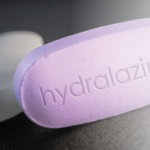WASHINGTON, D.C.—In 2011, rituximab was approved by the U.S. Food and Drug Administration for treatment in adults for two forms of antineutrophil cytoplasmic antibody (ANCA)–associated vasculitis—granulomatosis with polyangiitis (GPA; Wegener’s) and microscopic polyangiitis (MPA)—based on the results of the Rituximab for ANCA-Associated Vasculitis (RAVE) trial.1 Prior to rituximab, cyclophosphamide was used for many years as off-label treatment of these diseases and remains a viable option for a select group of patients, according to Carol Langford, MD, director of the Center for Vasculitis Care and Research at the Cleveland Clinic.
“We now have two effective options for remission induction of severe GPA/MPA, and that is great news for us and most importantly for our patients,” said Dr. Langford here at the 2012 ACR/ARHP Annual Meeting, held November 9–14. [Editor’s Note: This session was recorded and is available via ACR SessionSelect at www.rheumatology.org.]
Billed as “The Great Debate,” the session was a history lesson on the one hand, with Dr. Langford discussing the long years of experience, both personal and published, with cyclophosphamide; and, on the other hand, an overview of the current evidence establishing the role of rituximab as first-line therapy for remission induction in patients with severe disease by Ulrich Specks, MD, professor of medicine in the division of pulmonary and critical care medicine at the Mayo Clinic, Rochester, Minn.
Treatment Consensus on Some Patients
What emerged was an agreement that rituximab is the drug of choice in patients with severe disease relapse, as well as for those who have received prior treatment with cyclophosphamide.
For other select patients, however, cyclophosphamide may still play an important role. Both Drs. Langford and Specks agreed that patients who were excluded from the RAVE trial should not automatically be considered for rituximab. Patients excluded from RAVE included those with limited disease, those with disease that was too severe as demonstrated by a serum creatinine greater than 4.0 mg/dL, or the need for mechanical ventilation because of alveolar hemorrhage.
“Data from the RAVE trial cannot necessarily be extrapolated to patients that are substantially different from the trial cohort,” said Dr. Specks, adding that evidence to justify the use of rituximab, as well as cyclophosphamide, for patients with ANCA-associated vasculitis in patient populations different from the RAVE cohort needs to come from sources other than the RAVE trial.
One such source, he said, is from the Rituximab Versus Cyclophosphamide in ANCA-Associated Vasculitis (RITUXVAS) trial, which included patient populations that were different, but what he sees as complementary, to the RAVE trial.2 The patients in the RITUXVAS trial all had newly diagnosed ANCA-positive disease and severe renal disease (more severe than in the RAVE trial). The RITUXVAS trial found no difference in sustained remission at 12 months between rituximab plus cyclophosphamide versus cyclophosphamide followed by oral azathiprine.

